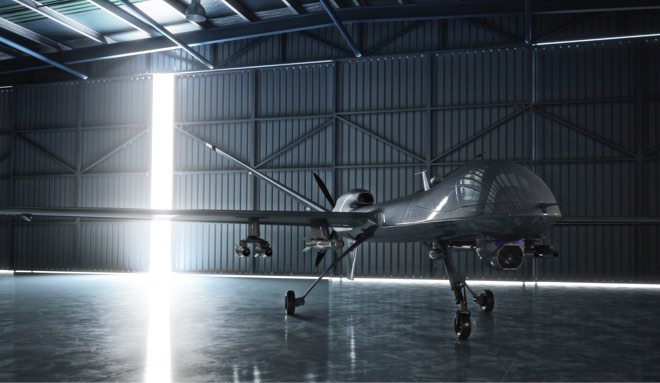Overview
Drones are rapidly proliferating. Over 90 countries and non-state groups operate drones today, and even more are certain to do so in coming years.1 These actors are beginning to employ drones in novel ways according to their own interests, opportunities, and constraints. As drones move beyond a niche capability used for surveillance and strike to an integral component of modern militaries, they could have an unanticipated impact on crisis stability, escalation dynamics, and norms regarding state sovereignty. What are the consequences of a world in which many actors – state and non-state alike – have access to drones? How will drones be used and what challenges should the United States prepare for? To help policymakers think through the implications of drone proliferation, the Center for a New American Security (CNAS) launched the World of Proliferated Drones project, a joint undertaking of the 20YY Future of Warfare Initiative and the Technology and National Security Program.
It would be naïve to assume that the future will look just like the past or that other actors will use drones just as the United States does. Understanding the contours of an increasingly drone-saturated world thus requires an understanding of how others perceive the issues and challenges surrounding drone use. For this reason, it is critical to examine the perspectives of international drone experts across a range of regions and countries.
CNAS has commissioned 10 essays featuring views from France, Germany, India, Indonesia, Israel, Japan, Russia, Singapore, South Korea, and Vietnam. These essays cover the two regions with the fastest-growing investments in drones – Asia and Europe – as well as the largest drone exporter in the world – Israel. While not an exhaustive survey of every country or every expert within these countries, the essays provide a valuable sampling of expert views in countries that are in various stages of incorporating drones into their militaries. CNAS additionally commissioned a response to each essay in order to further illuminate the regional and international dynamics of drone proliferation.

The authors were encouraged to follow a similar essay structure to enable the reader to make quick comparisons between essays. Each outlines the technology currently available to the respective country; the ways in which that country is likely to use drones; how that country is likely to react to foreign drone incursions into its territory; and constraints on that country’s future acquisition or use of drones. While many countries are grappling with similar issues, the ways in which they address them vary considerably. The common threads across the essays – and the differences among them – help to shed light on how drone proliferation is unfolding and how various actors are likely to respond. Four key themes emerge across the papers:
Countries face many similar challenges in integrating drones
As countries integrate drones into their forces, they face a number of challenges: encouraging indigenous production; deciding whether to acquire armed drones; developing concepts for employing drones in combat operations; and safely integrating drones into domestic airspace. While the solutions countries develop are different, nearly all of the countries represented in this volume are grappling with such issues in one form or another.
The U.S. precedent for drone use looms large in how many countries perceive drones
The use of armed drones by the United States in counterterrorism operations outside of traditional war zones has set a precedent that others have noted – some with approval and some with disapproval. This precedent may eventually raise awkward questions for U.S. policymakers if other countries invoke it in defense of policies that the United States does not approve of. For example, as Isabelle Facon highlights, Russia has already used drones in eastern Ukraine – and likely in Syria – and may use them in the Caucasus or Central Asia at some point in the future. U.S. policymakers may find it difficult to condemn such uses of drones outside of traditional combat zones, particularly if they are unable to articulate the differences between those actions that are legitimate and lawful and those that are not. The degree to which the United States’ use of drones shapes the thinking of other countries suggests that U.S. policymakers should be more cognizant of not only their actions, but also how they communicate the rationale for those actions to the rest of the world.
Drones are seen as providing states with greater flexibility
Because states can operate drones for markedly longer periods than human-inhabited aircraft – and without incurring direct risks to their citizens – several authors note that drones could allow their country to participate in a wider range of military operations or to consider new political options. Ulrike Esther Franke notes that drones could enable casualty-averse Germany to contribute more frequently to international missions, while Uri Sadot suggests that the persistence provided by drones could enable Israel to monitor the Jordan Valley while ceding physical control of the territory.
Countries have divergent views on how drones might be used in contested areas
One perhaps surprising theme is the divergence of views regarding what drones signal in a conflict and how countries might respond – or should respond – to foreign drone incursions into their respective airspaces. Most authors seem to believe that their country would be more likely to assume risk with an uninhabited system. For example, Sukjoon Yoon notes that South Korea sees human-inhabited flights in the contested airspace over the Korean Peninsula as being “too risky and of limited value” and thus argues that missions using unmanned aerial vehicles (UAVs) “should become the rule rather than the exception.” Likewise, Monika Chansoria details India’s use of surveillance drones near both the Line of Actual Control between India and China and along Jammu and Kashmir’s Line of Control and the International Border. In contrast, Jean-Baptiste Jeangène Vilmer states that France “is no more willing to deploy a drone in a contested area than a traditional human-inhabited aircraft.” Vilmer further notes that the use of drones, as opposed to human-inhabited aircraft, would not signal a reduction in the country’s resolve. This is particularly salient as it suggests that some countries have concerns that drone proliferation could increase the likelihood of miscalculation in certain types of crisis situations.

